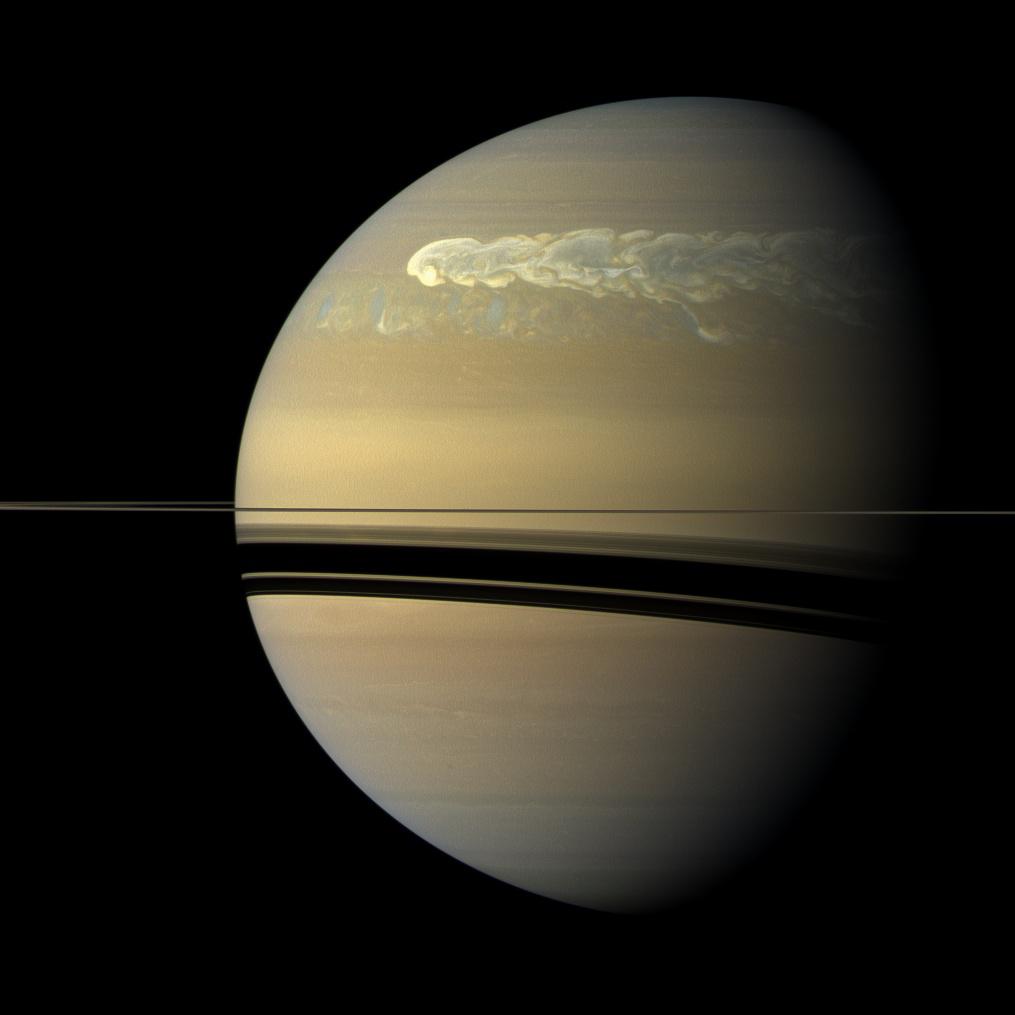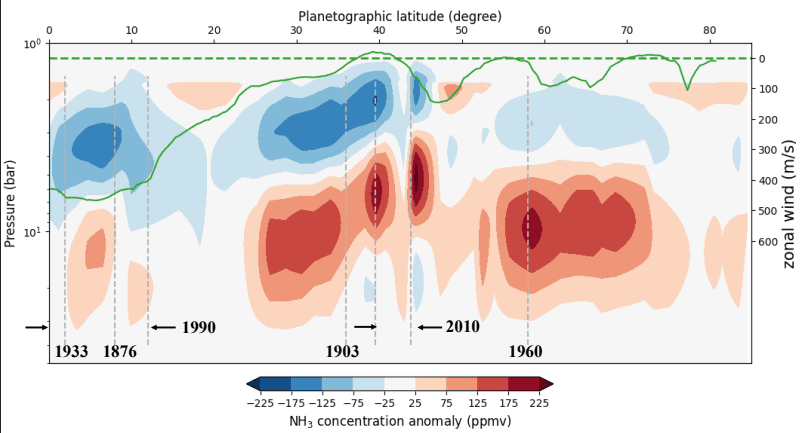
Megastorms leave marks on Saturn’s atmosphere for hundreds of years
Massive storms have appeared as “Great White Spots” on Saturn every 20 to 30 years since 1876. The impacts of those older storms have lasted in Saturn’s atmosphere for centuries.

Massive storms have appeared as “Great White Spots” on Saturn every 20 to 30 years since 1876. The impacts of those older storms have lasted in Saturn’s atmosphere for centuries.
Saturn’s megastorms impact the planet’s atmosphere for centuries, according to a new study conducted by astronomers from the University of California, Berkeley, and the University of Michigan, Ann Arbor. The team looked deeper into Saturn’s atmosphere than previous studies by developing new algorithms that could better determine how the storm’s ammonia levels attenuated Saturn’s radio signatures as they moved through the atmosphere.
The study was published today in the journal Science Advances.
Megastorms occur approximately every 20 to 30 years on Saturn, appearing as what astronomers call “Great White Spots.” They are similar to hurricanes on Earth, although significantly larger, but no one knows what causes megastorms in Saturn’s atmosphere, which is composed mainly of hydrogen and helium with traces of methane, water and ammonia.
“Understanding the mechanisms of the largest storms in the Solar System puts the theory of hurricanes into a broader cosmic context, challenging our current knowledge and pushing the boundaries of terrestrial meteorology,” said lead author Cheng Li, a former 51 Peg b Fellow at UC Berkeley who is now an assistant professor at the University of Michigan.
Imke de Pater, a UC Berkeley professor emerita of astronomy and of earth and planetary sciences, has been studying gas giants for over four decades to better understand their composition and what makes them unique, employing the Karl G. Jansky Very Large Array in New Mexico to probe the radio emissions from deep inside the planet.
“At radio wavelengths, we probe below the visible cloud layers on giant planets. Since chemical reactions and dynamics will alter the composition of a planet’s atmosphere, observations below these cloud layers are required to constrain the planet’s true atmospheric composition, a key parameter for planet formation models,” de Pater said.
“Radio observations help characterize dynamical, physical, and chemical processes including heat transport, cloud formation, and convection in the atmospheres of giant planets on both global and local scales,” she added.
As reported in the new study, de Pater, Li and UC Berkeley graduate student Chris Moeckel found something surprising in the radio emissions from the planet: anomalies in the concentration of ammonia gas in the atmosphere, which they connected to the past occurrences of megastorms in the planet’s upper hemisphere.

According to the team, the concentration of ammonia, an important component of Saturn’s atmosphere and weather, was enriched around 100 kilometers beneath ammonia-dry regions that formed higher in Saturn’s atmosphere during every storm since 1876. They believe that the ammonia fell from the upper atmosphere as rain or hail to the lower atmosphere, where it evaporated and has since lingered for centuries. At a latitude near 70 degrees N, an ammonia-rich region was not associated with a previous storm location, and the team suspects this region is evidence of an even older storm that predates astronomers’ observations of Saturn. How those megastorms form and leave marks on Saturn’s atmosphere for hundreds of years still remains a mystery to the researchers.
The study further revealed that although both Saturn and Jupiter are made of hydrogen gas, the two gas giants are remarkably dissimilar. While Jupiter does have tropospheric anomalies, they have been tied to its zones (whitish bands) and belts (darkish bands)—and are not caused by storms like they are on Saturn. This considerable difference between these neighboring gas giants is challenging what scientists know about the formation of megastorms on gas giants and other planets and may inform how they’re found and studied on exoplanets in the future.
The National Radio Astronomy Observatory (NRAO) is a facility of the National Science Foundation, operated under cooperative agreement by Associated Universities, Inc. The research was funded by the Heising-Simons Foundation.
By Robert Sanders, University of California, Berkeley; and Derek Smith, University of Michigan